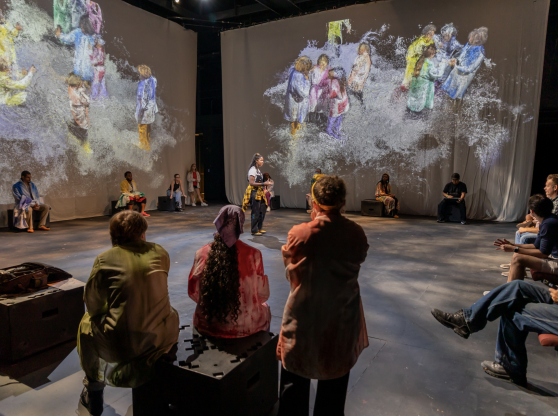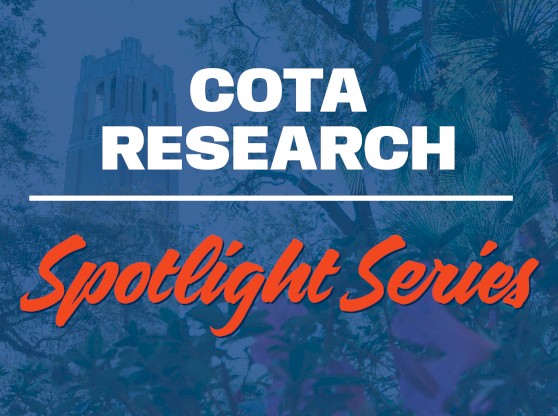Washington—The role of the arts in helping heal the signature wounds of our recent wars is significant and expanding. Through its national initiative Creative Forces: NEA Military Healing Arts Network, the National Endowment for the Arts (NEA) is adding four clinical sites to the existing seven sites that provide creative arts therapies for service members, veterans and families dealing with traumatic brain injuries (TBI) and post-traumatic stress disorder (PTSD). The new sites are:
- Joint Expeditionary Base - Little Creek, Virginia
- Fort Campbell - Kentucky
- James A. Haley Veterans’ Hospital - Tampa, Florida
- Fort Carson - Colorado
In addition to the physical sites, the NEA is working with the Center for Arts in Medicine at the University of Florida, in partnership with the Rural Veterans TeleRehabilitation Initiative to bring a telehealth program into Creative Forces for reaching patients in rural and remote areas. The Rural Veterans TeleRehabilitation Initiative is a program of the VA Office of Rural Health at the Malcom Randall Veterans Administration Medical Center in Gainesville. Also, the NEA is building community-based support networks around each of the 11 sites to provide military and veteran families with arts opportunities and a transition from clinic to community for former patients.
“It is a great honor for the National Endowment for the Arts to provide art-based services through our Creative Forces initiative to those who have served our nation so courageously and so well,” said NEA Chairman Jane Chu. “The added sites and activities we announce today will reach more military personnel, veterans, and their families who will find through the arts new avenues for healing and for growth.”
“We have witnessed the benefits to numerous individuals from this therapy as part of their rehabilitation program,” said Dr. Steven Scott, James A. Haley Veterans’ Hospital’s chief of Physical Medicine and Rehabilitation, and director of the Polytrauma Center. “The freedom to express their feelings and emotions through art and music is the same freedom they had defending our country with their lives. Art and music therapy treats the whole person and maximizes the healing and recovery of those who have fought for the freedoms of our country.”
Since 2011, the NEA has partnered with the U.S. Department of Defense to support creative arts therapies as a key element of integrated care for service members suffering from TBI, PTSD, and associated psychological health conditions. In fiscal year 2016, Congress appropriated a $1.928 million budget increase for the NEA, specifically to expand this military healing arts program. Joining the network with these new sites as a partner is the Department of Veteran Affairs. Americans for the Arts is working with the NEA to provide administrative support and the Writers Center in Bethesda, Maryland is participating in research and resource delivery. This infographic outlines the growth of Creative Forces since its inception.
Clinical Component
The new clinical sites join an existing Creative Forces network that includes:
- Joint Base Elmendorf-Richardson – Anchorage, Alaska
- Marine Corps Base Camp Pendleton – Oceanside, California
- National Intrepid Center of Excellence (NICoE) at Walter Reed National Military Medical Center – Bethesda, Maryland
- Marine Corps Base Camp Lejeune – Jacksonville, North Carolina
- Fort Hood – Killeen, Texas
- Fort Belvoir Community Hospital – Fort Belvoir, Virginia
- Madigan Army Medical Center – Tacoma, Washington
At each clinical site, NEA funds creative arts therapists and writing instructors, equipment, and supplies. The creative arts therapists are credentialed health professionals that provide art therapy and music therapy to military patients. At some sites, patients may also receive creative writing instruction.
In addition, and for the first time, Creative Forces will offer creative art therapy for families of wounded military personnel in order to build resilience as they all heal together. This work is being piloted at Fort Belvoir.
The telehealth program uses software similar to video conferencing to connect with patients in rural and remote areas, and who have difficulty accessing a clinic. The NEA is working closely with the Center for the Arts in Medicine at the University of Florida around a program piloted with the Malcom Randal Veterans Administration Medical Center to reach service members in rural Florida. Eventually, the program will be made available to other regions.
Community Component
To build the community component at each of the 11 sites, Creative Forces will lead efforts to:
- Establish local military/community networks that can help service members and veterans transition from clinic-based creative arts therapies to arts activities in their communities.
- Convene local summits where arts, community, and military populations collaborate on strategies to support military and veteran families. The summits also will offer training.
- Pursue an innovation project in each state that may be adapted to other locations. Project ideas under development include:
- Providing tele-support services for remote locations
- Aligning resources and strategies within a region or across federal and state agencies
- Undertaking program assessment
The NEA will make available $350,000 to fund the networks’ summits and innovation projects, and provide network-wide training and technical support for providers across all Creative Forces sites.
Capacity-building Component
As part of the agency’s plans for developing resources to assist the community networks and help advance creative art therapy for military personnel, the NEA is investing in research. The most recent research project featured an empirical study published in the peer-reviewed International Journal of Qualitative Studies on Health and Well-being onActive-duty military service members’ visual representations of PTSD and TBI in masks. One of the report’s authors, Girija Kaimal, discussed some of the findings on the NEA’s Art Works blog. Another report supported through Creative Forces is Art therapy for PTSD and TBI: A senior active duty military service member’s therapeutic journey.
About the National Endowment for the Arts
Established by Congress in 1965, the NEA is the independent federal agency whose funding and support gives Americans the opportunity to participate in the arts, exercise their imaginations, and develop their creative capacities. Through partnerships with state arts agencies, local leaders, other federal agencies, and the philanthropic sector, the NEA supports arts learning, affirms and celebrates America’s rich and diverse cultural heritage, and extends its work to promote equal access to the arts in every community across America. Visit arts.gov to learn more about NEA.
About Americans for the Arts
Americans for the Arts is the nation’s leading nonprofit organization for advancing the arts and arts education, dedicated to representing and serving local communities and to creating opportunities for every American to participate in and appreciate all forms of the arts. With offices in Washington, DC, and New York City, it has a record of more than 55 years of service. Since 2011, Americans for the Arts has led the National Initiative for Arts & Health in the Military (NIAHM), a collaborative effort that seeks to advance the policy, practice, and quality use of the arts and creativity as tools for health in the military; raise visibility, understanding, and support of arts and health in the military; and make the arts as tools for health available to active duty military, military families, and veterans. NIAHM's partners include the American Legion Auxiliary, U.S. Dept. of Veterans Affairs, U.S. Veterans Health Administration, and NIH’s National Center of Complementary & Integrative Health alongside arts, humanities, and veterans service nonprofits; state and local cultural agencies; and universities around the country. Additional information is available at www.artsacrossthemilitary.org.
###
Media Contact:
Victoria Hutter, NEA
hutterv@arts.gov
202-682-5692



